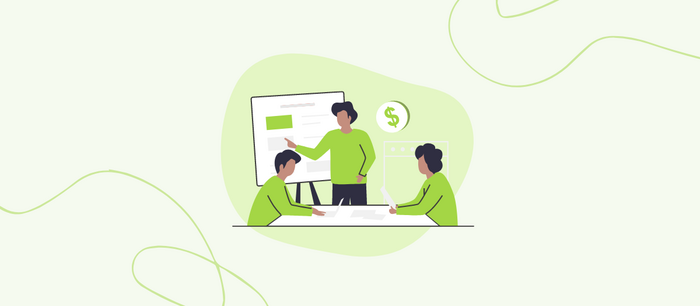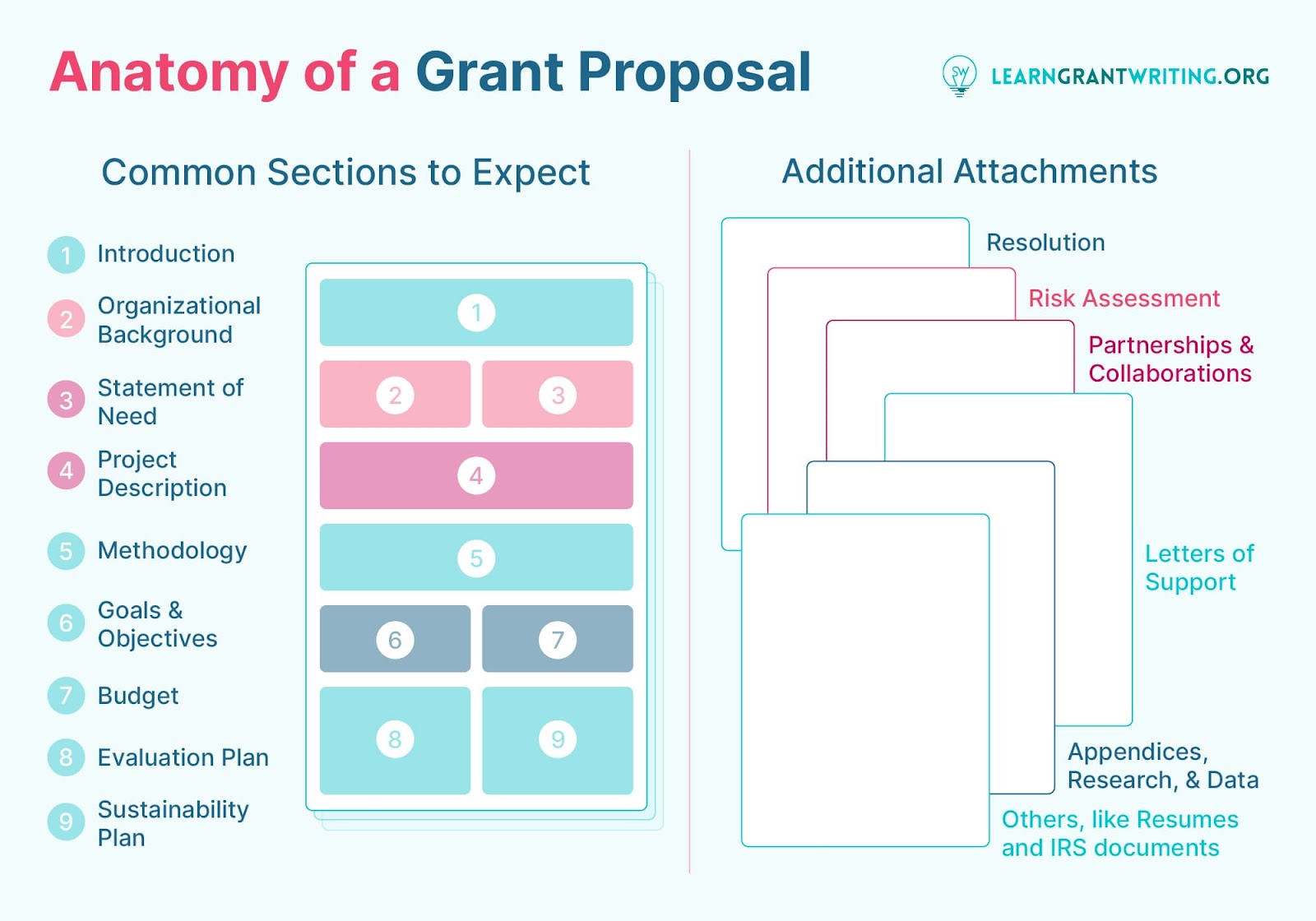5 Must-Know Project Management Essentials for Grant Writing

The term “grant writing” can be misleading.
All grant writers know it takes much more than just a pen and paper to construct a winning proposal. The process is more like orchestrating a symphony—it requires coordination, timing, and thorough planning.
If writing is an orchestra, project management is the conductor’s baton, signaling the cues you must follow to create a winning proposal! Whether you’re supporting a specific project or generally planning for the future, effective management can mean the difference between a discordant and harmonious outcome.
Here are the top project management essentials every grant writer should know.
1. Familiarize Yourself with Funding Guidelines
According to the Project Management Institute (PMI), the first phase in any project’s lifecycle is initiation.
The guidelines provided by the funder (or, as Learn Grant Writing’s guide to the basics calls them, your “North Star”) are like a route on a map. The destination? A winning grant proposal.
Read, reread, annotate, highlight keywords—whatever you need to do to understand and retain these guidelines. Here are some tips for familiarizing yourself with them:
- Create a checklist. As you read through the guidelines, list out all the requirements included. Separating the guidelines into actionable checklist items makes it easier to tackle them one by one.
- Draft a schedule. Assign deadlines to each checklist item. We’ll talk more about creating deadlines in the next section, but it’s important to note that you can use this timeline to create an overarching schedule for the project.
- Create a kickoff meeting agenda. Everyone involved with the project (e.g., people running the project funded by the grant, those who can provide information needed for the proposal, etc.) should meet to get on the same page. Use the requirements as a general framework for your meeting agenda.
It’ll also help to have an idea of all the sections and attachments required in your proposal. Here’s a general layout of what you might need to include:

- Introduction
- Organizational background
- Statement of need
- Project description
- Methodology
- Goals and objectives
- Budget
- Evaluation plan
- Sustainability plan
- Additional attachments, such as a risk assessment, letters of support, and IRS documents
When you’re an expert on the funding guidelines, you’ll know that every step of the process aligns with those requirements.
2. Create Timelines and Schedules
Just like nonprofits measure the progress of their fundraising campaigns, setting grant writing milestones can help you track your progress toward securing that funding.
While your exact schedule depends on the unique requirements laid out by the funding guidelines, it should generally include timeframes for:
- Creating the first draft of your grant narrative (ideally in four or fewer days)
- Sending progress updates to an accountability buddy (try every two or three days)
- Reviewing and submitting your proposal (one or two days before the application deadline)
Don’t forget to leave room for flexibility. Inevitably, you’ll run into team feedback, heavy revisions, or other unexpected delays that can draw this process out. With enough wiggle room, you can factor in those holdups without sacrificing any deadlines.
3. Use The Right Tools
Think back to our earlier analogy. Just as an orchestra’s instruments create the music, grant writing tools are what set your project in motion.
There are a few different types of tools you can use to manage this project:
- Artificial intelligence (AI): Winning grant proposals need a human touch, but you can still use AI grant writing tools to support the writing process. Try different tools for each aspect of the process, such as drafting, research, and formatting. Also, register for specialized courses that provide tips on using AI tools to make sure you’re taking the right approach.
- Project management tools: Use a dedicated project management solution to organize tasks, manage deadlines, and collaborate with others. Options like Asana or Trello are popular for grant writing because they make it easy to visualize workflows.
- Templates: Preset templates abound for each aspect of the grant writing process. Use a template to construct your schedule, kickoff meeting agenda, grant budget, and other areas that require thorough planning.
Although these tools are helpful, you have to use them wisely. For example, shooting off a random email and implementing thoughtful email strategies will yield two very different results.
It’s important to use these platforms cautiously, especially for AI tools. Don’t get too caught up in all the features they offer; instead, use them strategically to simplify the tasks on your plate.
4. Build a Repeatable Process
Whether this is your first time writing a grant proposal or you’re a seasoned grant writer, you need to have your process down. A repeatable process makes it easy to approach each project with confidence. And, if you’re a freelance grant writer, it allows you to move onto the next project without skipping a beat.
This might involve building consistency around your:
- Deadlines: The timeframes you set for your workflows may vary depending on several factors, such as external application deadlines, availability of key personnel, and proposal complexity. However, you can set specific deadlines for your workflows as you learn what works best for you.
- Templates: We’ve already mentioned templates, but the good news is that they can be used across different projects! For example, a kickoff meeting agenda template can be used for any kickoff meeting you host, now or in the future.
- Engagement efforts: Perhaps you’ve found success centering your grant proposals around impact data. Or, maybe quotes from beneficiaries are the key to acceptance. Whatever strategies you find are most successful for grabbing the reviewers’ attention, bake them into your regular processes!
If you’re repeating a process, it’s probably because it has been proven to be successful. However, it’s always helpful to look for areas for improvement.
Use lessons learned from past projects to optimize your next one. For example, if you find that you tend to miss mistakes before submitting, consider establishing a step in your process where you send the proposal to a third party for review.
5. Establish Strong Relationships with Funders
Grant writing isn’t a solo project—it’s a team effort. There are many parties involved, from the nonprofit applicant’s team to the funder reviewing your proposal.
Establishing a strong relationship with the funder can help you better understand their expectations and tailor your process to meet those criteria.
Getting Attention’s guide to finding a grant recommends asking the funder questions like:
- What is your selection process?
- Have your submission instructions undergone any recent changes not shown on your website?
- What is an appropriate amount to request in a proposal for someone who has never been funded by your organization?
You can also keep funders in the loop once your proposal has been accepted. Sharing the nonprofit’s milestones, successes, and even shortcomings demonstrates transparency that funders will remember.
Managing a grant opportunity is a significant part of the grant writing process. Knowing how to do it correctly can mean the difference between a proposal that secures critical funding and one that falls short.
To perfect your project management skills, collaborate with and learn from other grant writers. With the support of like-minded project managers, you can brainstorm new strategies, improve your efforts, and ultimately win more funding!
Stay on top of every grant opportunity.
Download Keela’s free Grant Application Management Template to streamline your process and secure more funding.
.svg)



